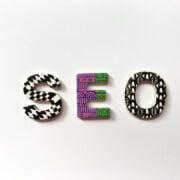
Mastering the Art of Email Marketing: Tips and Tricks for Successful Campaigns
Email marketing has become an essential tool for businesses to reach and engage with their target audience. It involves sending targeted emails to a group of individuals who have opted in to receive communication from a company. This form of marketing allows businesses to directly communicate with their customers, build brand loyalty, and drive sales. In today’s digital age, where people are constantly connected to their email accounts, email marketing has become a powerful tool for businesses of all sizes.
Key Takeaways
- Email marketing is a cost-effective way to reach a large audience and build relationships with customers.
- Building a strong email list requires offering valuable content and incentives for sign-ups.
- Effective subject lines should be clear, concise, and personalized to the recipient.
- Compelling email content should be relevant, engaging, and visually appealing.
- Eye-catching email templates should be mobile-friendly and consistent with brand identity.
Understanding the Basics of Email Marketing
Email marketing is the practice of sending commercial messages to a group of individuals via email. These messages can include promotional content, newsletters, updates, and more. The goal of email marketing is to build relationships with customers, encourage repeat business, and drive sales.
There are several benefits to using email marketing as part of your overall marketing strategy. Firstly, it is a cost-effective way to reach a large number of people. Unlike traditional forms of advertising such as print or television, email marketing allows you to send messages directly to your target audience without incurring high costs.
Secondly, email marketing allows for personalized communication. By segmenting your email list and sending targeted messages based on customer preferences and behaviors, you can create a more personalized experience for your customers.
There are different types of email marketing that businesses can utilize. These include promotional emails, which are designed to promote a specific product or service; newsletters, which provide valuable content and updates to subscribers; and transactional emails, which are triggered by specific actions taken by the customer, such as making a purchase or signing up for a newsletter.
Building a Strong Email List
Having a strong email list is crucial for the success of your email marketing campaigns. An email list consists of individuals who have willingly provided their contact information and given permission to receive communication from your business. Building a strong email list ensures that you are reaching people who are interested in your products or services, increasing the likelihood of engagement and conversions.
There are several ways to build an email list. One of the most effective methods is to offer something of value in exchange for a person’s email address. This could be a free e-book, a discount code, or access to exclusive content. By providing something valuable, you are incentivizing people to sign up for your email list.
Another way to build an email list is through social media. By promoting your email list on platforms such as Facebook or Instagram, you can reach a wider audience and encourage them to sign up for your emails.
Once you have built your email list, it is important to manage it effectively. This includes regularly cleaning your list by removing inactive subscribers and ensuring that your emails are reaching the intended recipients. It is also important to comply with email marketing regulations, such as obtaining consent from subscribers and providing an easy way for them to unsubscribe if they no longer wish to receive communication from your business.
Crafting Effective Email Subject Lines
| Metrics | Description |
|---|---|
| Open Rate | The percentage of recipients who opened the email |
| Click-Through Rate (CTR) | The percentage of recipients who clicked on a link within the email |
| Conversion Rate | The percentage of recipients who completed a desired action after clicking on a link within the email |
| Bounce Rate | The percentage of emails that were undeliverable and returned to the sender |
| Unsubscribe Rate | The percentage of recipients who opted out of receiving future emails |
| Subject Line Length | The number of characters or words in the subject line |
| Personalization | The use of recipient’s name or other personalized information in the subject line |
| Emojis | The use of emojis in the subject line |
| Urgency | The use of urgent language or time-sensitive information in the subject line |
| Relevance | The alignment of the subject line with the content of the email and the recipient’s interests |
The subject line of an email is one of the most important elements, as it determines whether or not the recipient will open the email. A compelling subject line can increase open rates and engagement, while a lackluster subject line can result in your email being ignored or deleted.
When crafting subject lines, it is important to be concise and clear. Avoid using overly long or vague subject lines that may confuse or bore the recipient. Instead, focus on creating subject lines that are attention-grabbing and pique curiosity.
One tip for writing effective subject lines is to use personalization. By including the recipient’s name or referencing their previous interactions with your business, you can create a sense of familiarity and increase the likelihood of them opening the email.
Another tip is to create a sense of urgency or exclusivity in your subject lines. By using words such as “limited time offer” or “exclusive access,” you can create a sense of urgency and encourage the recipient to take action.
Here are some examples of effective subject lines:
– “Last chance to save 50% on your favorite products!”
– “Exclusive offer for our loyal customers”
– “Your personalized guide to achieving your fitness goals”
Creating Compelling Email Content
Once you have enticed the recipient to open your email with an effective subject line, it is important to deliver compelling content that keeps them engaged. The content of your email should be relevant, valuable, and tailored to the needs and interests of your target audience.
One tip for creating compelling email content is to provide value. This could be in the form of educational content, tips and tricks, or exclusive offers. By providing something of value, you are more likely to keep the recipient engaged and encourage them to take action.
Another tip is to use visuals in your email content. Including images or videos can make your emails more visually appealing and help convey your message more effectively. However, it is important to ensure that the visuals are relevant and enhance the overall message of your email.
Here are some examples of effective email content:
– A clothing retailer sending a personalized email with outfit suggestions based on the recipient’s previous purchases
– A software company sending a tutorial video on how to use their product
– A restaurant sending a monthly newsletter with recipes and cooking tips
Designing Eye-Catching Email Templates
The design of your email templates plays a crucial role in capturing the attention of your recipients and conveying your brand identity. An eye-catching email template can make your emails stand out in a crowded inbox and increase engagement.
When designing email templates, it is important to keep them clean and visually appealing. Avoid cluttered designs or excessive use of colors and fonts that may distract or confuse the recipient. Instead, focus on creating a design that is visually appealing, easy to read, and consistent with your brand identity.
One tip for designing eye-catching email templates is to use responsive design. With the increasing use of mobile devices, it is important to ensure that your emails are optimized for different screen sizes. Responsive design allows your emails to adapt to different devices, ensuring a seamless user experience.
Another tip is to use whitespace effectively. Whitespace refers to the empty space between elements in your email template. By using whitespace strategically, you can create a clean and organized design that is easy on the eyes and enhances readability.
Here are some examples of effective email templates:
– A travel agency sending a visually stunning email with images of exotic destinations and a clear call-to-action button to book a trip
– An e-commerce store sending a clean and minimalist email template showcasing their latest products and offering a discount code
– A nonprofit organization sending an email template with impactful images and compelling storytelling to encourage donations
Personalizing Emails for Better Engagement
Personalization is a powerful tool in email marketing that can significantly improve engagement and conversions. By tailoring your emails to the individual recipient, you can create a more personalized and relevant experience that resonates with them.
There are several ways to personalize emails. One method is to use the recipient’s name in the email greeting or subject line. This simple touch can create a sense of familiarity and make the recipient feel valued.
Another way to personalize emails is by segmenting your email list based on customer preferences, behaviors, or demographics. By sending targeted emails to specific segments of your audience, you can provide more relevant content and increase engagement.
Here are some examples of effective personalized emails:
– An online retailer sending a personalized email with product recommendations based on the recipient’s browsing history or previous purchases
– A fitness studio sending a personalized email with workout tips and recommendations based on the recipient’s fitness goals
– A software company sending a personalized email with tips and tricks on how to get the most out of their product, tailored to the recipient’s usage patterns
Optimizing Email Sending Frequency
Finding the right balance in email sending frequency is crucial for maintaining engagement and avoiding subscriber fatigue. Sending too many emails can overwhelm your recipients and lead to unsubscribes, while sending too few emails may result in your messages being forgotten or ignored.
The optimal email sending frequency depends on several factors, including your industry, target audience, and the type of content you are sending. It is important to strike a balance between staying top-of-mind with your audience and not overwhelming them with too many emails.
One best practice for email sending frequency is to set expectations from the beginning. When someone signs up for your email list, clearly communicate how often they can expect to receive emails from you. This helps manage expectations and reduces the likelihood of unsubscribes due to perceived spamming.
Another best practice is to monitor engagement metrics such as open rates and click-through rates. If you notice a decline in engagement, it may be a sign that you are sending too many emails or that your content is not resonating with your audience. Use these metrics as a guide to adjust your email sending frequency accordingly.
Here are some examples of effective email sending frequency:
– A daily deals website sending a daily email with limited-time offers
– A monthly newsletter providing valuable content and updates to subscribers
– A software company sending a weekly email with product updates and tips
Tracking and Analyzing Email Campaign Performance
Tracking and analyzing the performance of your email campaigns is essential for understanding what is working and what can be improved. By monitoring key metrics, you can gain insights into the effectiveness of your campaigns and make data-driven decisions to optimize your email marketing strategy.
There are several metrics that you should track when analyzing email campaign performance. These include open rate, click-through rate, conversion rate, unsubscribe rate, and bounce rate. By tracking these metrics, you can determine the success of your campaigns and identify areas for improvement.
There are various tools available to help track and analyze email campaigns. Email service providers such as Mailchimp, Constant Contact, and Campaign Monitor offer built-in analytics features that allow you to track key metrics and generate reports. These tools provide valuable insights into the performance of your campaigns and help you make data-driven decisions.
Integrating Social Media with Email Marketing
Integrating social media with email marketing can be a powerful combination that allows you to reach a wider audience and increase engagement. By leveraging the power of social media platforms, you can extend the reach of your email campaigns and encourage social sharing.
There are several ways to integrate social media with email marketing. One method is to include social sharing buttons in your emails, allowing recipients to easily share your content on their social media profiles. This can help increase the visibility of your emails and attract new subscribers.
Another way to integrate social media with email marketing is to promote your email list on social media platforms. By running targeted ads or organic posts promoting the benefits of signing up for your emails, you can reach a wider audience and encourage them to join your email list.
Here are some examples of effective social media and email marketing integration:
– A clothing retailer running a Facebook ad promoting a limited-time offer exclusive to email subscribers
– A nonprofit organization sharing a compelling story on Instagram and encouraging followers to sign up for their newsletter for more inspiring content
– A software company running a Twitter campaign asking followers to retweet for a chance to win a free subscription
Avoiding Common Email Marketing Mistakes
While email marketing can be a highly effective tool, there are common mistakes that businesses should avoid in order to maximize their success. By being aware of these mistakes and taking steps to avoid them, you can ensure that your email marketing campaigns are successful.
One common mistake is sending generic or irrelevant content. It is important to tailor your emails to the needs and interests of your target audience. Sending generic or irrelevant content can lead to disengagement and unsubscribes.
Another mistake is neglecting to test your emails before sending them. It is important to test your emails across different devices and email clients to ensure that they are displaying correctly. Neglecting to test can result in broken links, formatting issues, or other errors that can negatively impact the recipient’s experience.
Here are some examples of email marketing mistakes to avoid:
– Sending too many emails and overwhelming your subscribers
– Neglecting to segment your email list and sending irrelevant content
– Failing to comply with email marketing regulations, such as obtaining consent from subscribers and providing an easy way to unsubscribe
Email marketing is a powerful tool for businesses to reach and engage with their target audience. By understanding the basics of email marketing, building a strong email list, crafting effective subject lines and compelling content, designing eye-catching templates, personalizing emails, optimizing sending frequency, tracking and analyzing performance, integrating social media, and avoiding common mistakes, businesses can implement effective email marketing strategies that drive results. By leveraging the power of email marketing, businesses can build relationships with customers, increase brand loyalty, and drive sales.
If you’re interested in holistic wellness and exploring alternative therapies, you might find this article on unlocking the potent healing potential of herbal medicine fascinating. It delves into the world of herbal remedies and their role in promoting overall well-being. Discover the power of nature’s medicine cabinet and how it can complement your healthy lifestyle. Check out the article here to learn more.
FAQs
What is email marketing?
Email marketing is a digital marketing strategy that involves sending promotional messages or newsletters to a group of people via email. The goal of email marketing is to build relationships with customers, increase brand awareness, and drive sales.
What are the benefits of email marketing?
Email marketing has several benefits, including increased brand awareness, improved customer engagement, higher conversion rates, and increased customer loyalty. It is also a cost-effective way to reach a large audience and can be easily tracked and measured.
What are the best practices for email marketing?
Some best practices for email marketing include segmenting your email list, personalizing your emails, using a clear and concise subject line, including a call-to-action, and optimizing your emails for mobile devices. It is also important to comply with email marketing regulations, such as the CAN-SPAM Act.
What is a good open rate for email marketing?
The average open rate for email marketing varies by industry, but a good open rate is generally considered to be around 20%. However, open rates can be influenced by several factors, including the quality of your email list, the subject line, and the time of day the email is sent.
What is a good click-through rate for email marketing?
The average click-through rate for email marketing varies by industry, but a good click-through rate is generally considered to be around 2-3%. However, click-through rates can be influenced by several factors, including the quality of your email list, the content of your email, and the call-to-action.
What are some common email marketing mistakes to avoid?
Some common email marketing mistakes to avoid include sending too many emails, not segmenting your email list, using a generic subject line, not personalizing your emails, and not optimizing your emails for mobile devices. It is also important to avoid spamming your subscribers and to comply with email marketing regulations.


















